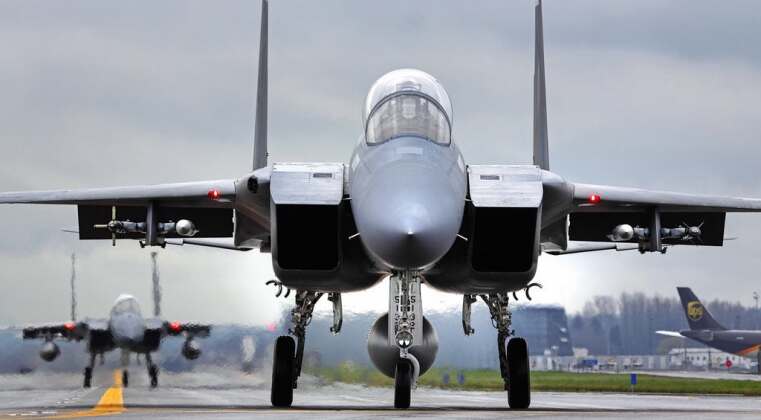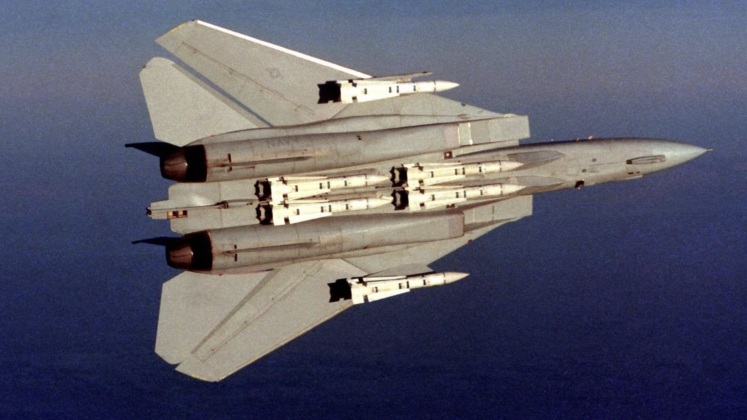News
Foxbat Hunting: How America’s Elite F-14 and F-15 Units Trained to Eliminate Mach 3+ Soviet MiGs – Part One
The first Western fourth generation fighters the heavyweight F-14 Tomcat and F-15 Eagle entered service in 1974 and 1976 respectively the former in the U.S. Navy and the latter in the Air Force, with the two relied on to provide the country’s to end air superiority capability for three decades until the first fifth generation jets began to enter service from December 2005. In the 1970s one of the leading challenges facing American tactical aviation, and one which the F-15 in particular was designed to tackle, was the Soviet MiG-25 Foxbat interceptor. The Soviet jets were capable of flying at altitudes of over 30km and reaching speeds over Mach 3.2, leaving the U.S. and its allies unable to seriously threaten the aircraft with fighters or air defence systems in their previous encounters. The MiG-25 held absolute records among the world’s combat aircraft for both speed and altitude, with later variants also bringing a formidable electronic warfare capability to the field, which made them among the most survivable combat jets in the world.
 In Soviet hands at the beginning of the 1970s very early MiG-25 models had flown over the then Israeli held Sinai Peninsula showed existing U.S. made anti aircraft systems and fighters to be wholly ineffective against the new platform, despite the peninsula fielding MIM-23 Hawk systems and F-4E Phantom fighters which were the most capable NATO had to deploy against the Warsaw Pact. While the MiG-25 was the most capable and survivable combat aircraft of its time, the U.S. overestimated its capabilities and had though its large wings indicated high levels of manoeuvrability on par with fourth generation fighters. Manoeuvrability was in fact the MiG-25’s foremost weakness, and the large wings were necessary to support its extreme weight and payload of very large R-40 missiles which carried massive 100kg warheads. The aircraft heavily compensated for low manoeuvrability with the power of its missile arsenal, with both the R-40 and the short ranged R-60 outperforming their Western counterparts when the entered service.
In Soviet hands at the beginning of the 1970s very early MiG-25 models had flown over the then Israeli held Sinai Peninsula showed existing U.S. made anti aircraft systems and fighters to be wholly ineffective against the new platform, despite the peninsula fielding MIM-23 Hawk systems and F-4E Phantom fighters which were the most capable NATO had to deploy against the Warsaw Pact. While the MiG-25 was the most capable and survivable combat aircraft of its time, the U.S. overestimated its capabilities and had though its large wings indicated high levels of manoeuvrability on par with fourth generation fighters. Manoeuvrability was in fact the MiG-25’s foremost weakness, and the large wings were necessary to support its extreme weight and payload of very large R-40 missiles which carried massive 100kg warheads. The aircraft heavily compensated for low manoeuvrability with the power of its missile arsenal, with both the R-40 and the short ranged R-60 outperforming their Western counterparts when the entered service.

In response to the MiG-25 the U.S. raised the standards of its fourth generation fighter programs to handle the new threat. The F-14 was designed to carry up to six AIM-54 Phoenix missiles, and these 190km range Mach 5 munitions would prove the most capable in the world for long range interception and held this position for decades. The F-15 notably lacked such long range strike capabilities and was a more conservative design, with its lighter AIM-7 missiles lacking active radar guidance and ‘fire and forget’ capabilities and having a much shorter range and lower speed. The F-15 was however by far the fastest combat aircraft to enter service in the West, reaching speeds of over Mach 2.5, and could operate at higher altitudes than the F-14 although still well below the MiG-25. In terms of sensors, however, the F-14’s advantage was overwhelming and unrivalled worldwide until the entry into service of the Soviet MiG-31 in 1981.

The MiG-25 was deployed in very large numbers by the Soviet Military, which by 1985 when the type ceased production was estimated to field well over 600 at a conservative estimate, and as a result of the challenge the aircraft posed F-15 units were given specific training on how to counter the Foxbat. F-15 pilot Lieutenant Rob Graeter explained regarding preparations to deal MiG-25s: “We had trained for the high-fast-flyer threat and knew that to handle that guy we’d have to dump all of our fuel tanks. We would fly a profile that involved getting to 40,000 ft, then unload the jet (pushing forward on the stick to induce 0g) in full afterburner to get it accelerate. Once up to Mach 1.7 or so, we’d gingerly pull the nose back up to 20-30 degrees, centre up the dot on the AIM-7 (align the nose with the computer-generated steering dot) and salvo all four missiles.” While this approach was not always successful, and the MiG-25 proved the most survivable platform against the F-15 both in Israeli-Syrian conflicts in the 1980s and in Iraqi hands during the Iraqi-Iraq and Gulf wars, it was nevertheless a far more reliable way of targeting the Foxbats than anything that had preceded it.
Continued in Part Two












